Do you want to know how to cover a new tattoo in a tanning bed and protect it from damage? This complete guide will provide you with all the information you need to safely and effectively cover a new tattoo in a tanning bed. We’ll cover the essential steps for protecting your tattoo from the effects of UV radiation, as well as discuss why you should avoid tanning beds altogether. By following these steps, you can ensure that your new tattoo is not damaged by UV rays and remains in perfect condition.
Contents
What is a Tanning Bed?

A tanning bed is a device that uses ultraviolet (UV) light to simulate the sun’s natural tanning rays. It is a type of artificial tanning that gives people the opportunity to get a tan without having to expose themselves to the sun. Tanning beds come in various shapes and sizes and can be used to achieve a range of different tans. The most common type of tanning bed is the traditional bed with several lamps that emit UV rays. The intensity of the UV rays and the length of tanning sessions vary depending on the type of tanning bed being used. Tanning beds are often used to achieve a faster, deeper tan than the sun. However, it’s important to note that tanning beds can be dangerous if not used properly and can increase the risk of skin cancer. It is therefore important to consult with a doctor before using a tanning bed and to follow all safety guidelines. Additionally, it is recommended to wait at least six weeks after getting a tattoo before using any type of tanning bed to avoid irritation and potential damage.
Why Can’t You Tan After a Tattoo?
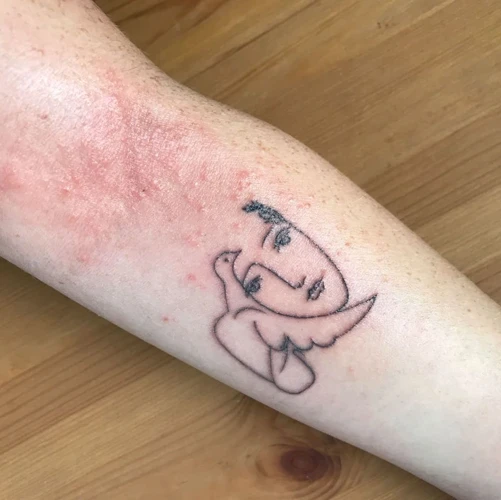
Tattooing involves puncturing the skin with a needle and depositing ink into the wounds. This can cause the skin to become inflamed and sensitive, and increase its susceptibility to sunburn. As a result, it’s important to avoid tanning after a tattoo. Tanning beds expose the skin to UV radiation, which can damage the skin cells, irritate the wound, and increase the risk of infection. Additionally, UV radiation can cause the ink to fade, distorting the tattoo’s design.
When Can You Tan After a Tattoo?
It’s important to wait at least two weeks before tanning after a tattoo. The wound should have completely healed before exposing it to UV radiation. After two weeks, you can begin tanning with caution. Start with shorter tanning sessions and use a lower level of UV radiation. Additionally, use a high-quality sunscreen or tanning lotion to protect the tattoo from fading or burning.
How Long After a Tattoo Can You Tan?
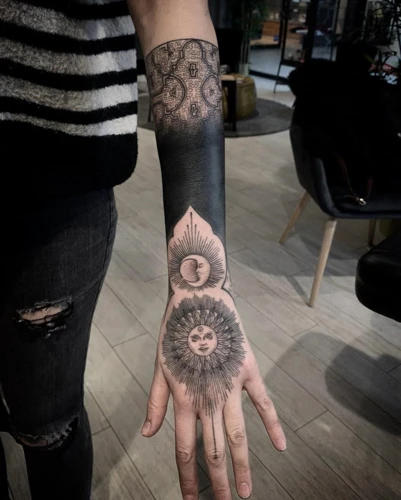
When getting a new tattoo, it’s important to understand how long you should wait before tanning. Tanning with a new tattoo can cause serious skin damage and reduce the quality of the tattoo. Generally, it’s recommended to wait at least 3-4 weeks before tanning, and even longer for larger or more intricate tattoos.
Here are some things to consider when deciding how long to wait before you can tan:
- Healing time: Tattoo healing time can vary depending on the size and location of the tattoo, but it typically takes at least 2-3 weeks for the tattoo to be fully healed. It’s best to wait until the tattoo has completely healed before tanning.
- Sun sensitivity: New tattoos are especially sensitive to the sun and can be easily damaged by its UV rays. Tanning can cause the tattoo to fade or blur, and may even affect the color of the ink. As a result, it’s important to wait until the tattoo has had enough time to heal before tanning.
- Infection risk: Tanning with a new tattoo can increase the risk of infection. Tanning beds can also be hot and uncomfortable, which can irritate the skin and potentially cause infection. Because of this, it’s best to wait until the tattoo is completely healed before tanning.
It’s also important to take proper care of your tattoo while it’s healing. This includes keeping the area clean and moisturized, avoiding direct sunlight, and not picking or scratching at the tattoo. These steps can help ensure that your tattoo looks its best and will last for years to come.
So, what happens if you tan with a new tattoo? Tanning with a new tattoo can cause serious skin damage, reduce the quality of the tattoo, and increase the risk of infection. For these reasons, it’s best to wait until the tattoo has had enough time to heal before tanning.
Preparing for Tanning After a Tattoo
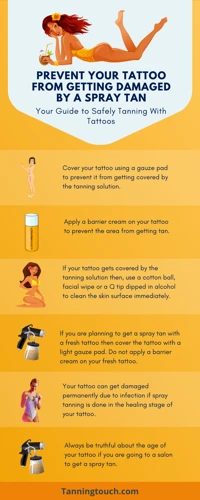
It is important to take the necessary precautions before and after tanning if you have a new tattoo. The ultraviolet (UV) rays from the tanning bed can cause skin damage and fading of the tattoo ink. To protect your tattoo, you should take the following steps before and after tanning:
Before Tanning:
- Wait at least two weeks after getting a tattoo before tanning.
- Make sure the tattoo is completely healed and any scabbing is gone.
- Apply a broad-spectrum sunscreen with an SPF of 30 or higher to the tattoo, and be sure to cover any exposed skin as well.
- Wear protective eyewear to protect your eyes from the UV rays.
After Tanning:
- Immediately after tanning, apply a moisturizing lotion to the tattoo to keep the skin hydrated.
- Refrain from swimming in chlorinated water for at least two weeks after tanning.
- Avoid any activities that may cause sweat or friction on the tattoo for at least two weeks.
- Reapply sunscreen to the tattoo when exposed to direct sunlight.
By taking these steps, you can help protect your new tattoo from the damaging effects of tanning beds and ensure that it stays vibrant and beautiful for years to come. If you have any questions about how to protect a tattoo on a sunbed, be sure to consult your tattoo artist for advice.
How to Cover a New Tattoo in a Tanning Bed
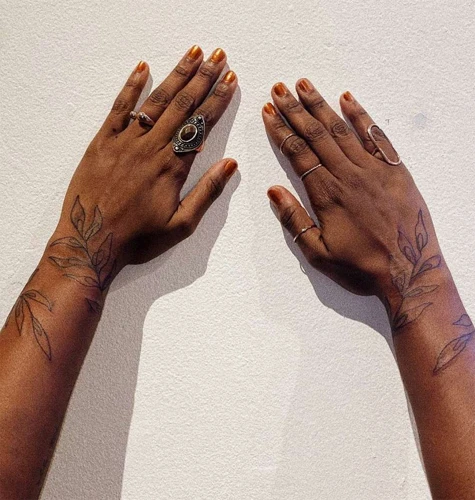
Tanning After Getting a Tattoo: It is not advisable to sunbathe or use a tanning bed right after getting a tattoo. It is best to wait at least two weeks after getting a tattoo before exposing it to any form of UV light, including tanning beds.
Preparing to Tan: Before using a tanning bed, make sure to moisturize your tattoo and the surrounding area. This will help prevent the skin from drying out and cracking. You should also cover your tattoo with a waterproof bandage or wrap, as this will protect it from the UV rays and from possible infections.
Tanning Bed Settings: When you are ready to use a tanning bed, be sure to adjust the settings to the lowest possible levels. Start with one or two minutes of exposure and gradually increase the time if needed. Be sure to move around to ensure all parts of your body get an even tan.
After Tanning: After tanning, remove the bandage or wrap and rinse the area with cold water. Gently pat the area dry and apply a moisturizer to the skin. It is important to keep the area clean and moisturized to prevent it from becoming dry and itchy.
Important Tips:
| Tips | Description |
|---|---|
| Wear Sunscreen | It is important to wear sunscreen when you are outside, regardless of the time of year. Sunscreen provides extra protection for your tattoo and should be applied every two to three hours. |
| Stay Hydrated | Drinking plenty of water can help keep your skin hydrated, which is important for the healing process. |
| Avoid Direct Sunlight | It is best to avoid direct sunlight for at least six weeks after getting a tattoo, as this can cause discoloration and fading. |
Covering a new tattoo in a tanning bed is possible, but it should be done carefully. Take the proper precautions to protect your skin and make sure to follow the recommended time limit. Remember, it is best to wait at least two weeks after getting a tattoo before exposing it to any form of UV light, including tanning beds.
How to Protect a Tattoo on a Sunbed
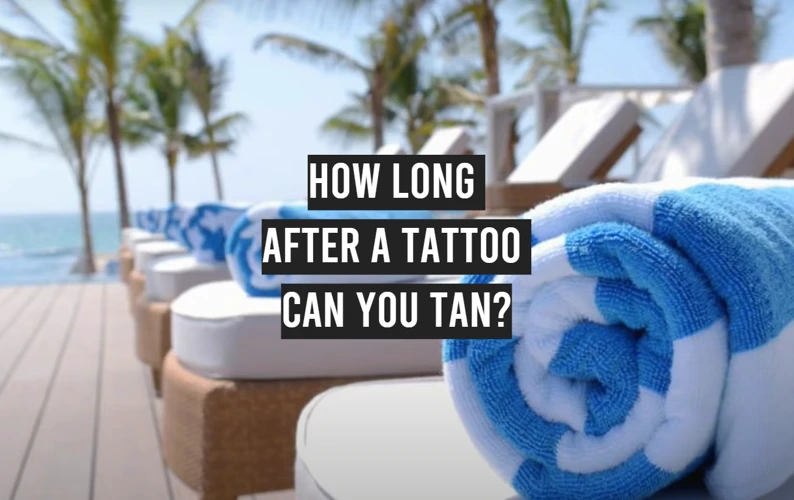
Tattoos are meant to last a lifetime, but tanning beds can significantly reduce their lifespan. The UV rays from the sunbeds can cause fading and discoloration, leaving your beloved body art looking less than perfect. To prevent this, there are some steps you can take to protect your tattoo while still getting a nice tan.
Use Sunscreen: Sunscreen is essential for protecting your skin and with a new tattoo, it’s even more important. Make sure to apply sunscreen with an SPF of 30 or higher to your tattoo before spending time in the sunbed. Reapply every few hours to ensure your tattoo stays protected.
Cover it Up: If you can, cover your tattoo with a bandage or medical tape while using a sunbed. This will provide further protection and prevent the UV rays from reaching your skin.
Tan Gradually: It’s important to understand why you can’t tan after a tattoo. Tanning beds use UV radiation to tan your skin, and exposing new tattoos to radiation can cause the ink to fade or be distorted. To prevent this, start off with a low-level tanning for a few minutes and then increase the level over the course of a few days.
Listen to Your Artist: Your tattoo artist will likely give you specific instructions on how to care for your tattoo, including tips on protecting it in a sunbed. Be sure to follow their advice to ensure your tattoo keeps its original look and color.
| Protection | How to Do It |
|---|---|
| Use Sunscreen | Apply sunscreen with an SPF of 30 or higher to your tattoo before using a sunbed. |
| Cover it Up | Cover your tattoo with a bandage or medical tape while using a sunbed. |
| Tan Gradually | Start off with a low-level tanning for a few minutes and then increase the level over the course of a few days. |
| Listen to Your Artist | Follow the advice of your tattoo artist to ensure your tattoo keeps its original look and color. |
By following these steps, you can ensure your tattoo will stay as vibrant and beautiful as the day you got it.
What Happens if You Tan with a New Tattoo?
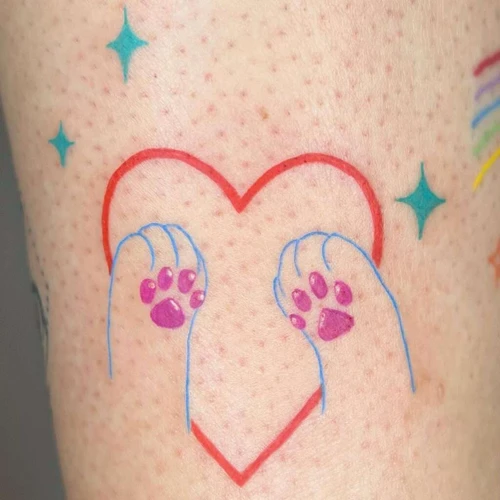
It is strongly advised against tanning with a new tattoo. The combination of UV rays and open skin can cause extreme sunburn, blisters, and even infection. Tanning with a new tattoo can also damage the artwork, causing the colors to fade or run. You should always wait until your tattoo is fully healed before tanning in a tanning bed.
The healing process for a new tattoo can take several weeks. During this time, the skin is still very delicate and sensitive to light. If you tan with a new tattoo, the UV rays can penetrate the skin and cause serious damage. Sunburns can develop quickly, and the tattoo may blister or become infected.
If you do choose to tan with a new tattoo, you must take extra precautions. Wear a shirt or wrap to cover the tattoo, and use a heavy-duty sunscreen with a high SPF to protect the skin. You should also decrease the amount of time you spend in the tanning bed and use the lowest setting possible.
The best course of action is to wait until your tattoo is healed. Once it is fully healed, you can tan in a tanning bed without worrying about damaging the artwork or causing any health risks.
Additional Tips to Protect Your Tattoo
- Use Sunscreen: Always wear a waterproof sunscreen with SPF 30 or higher when tanning, even if you are wearing a protective barrier cream. This will help protect your tattoo from sunburn.
- Avoid Overexposure: Tan in short intervals and be sure to get out of the sun or tanning bed if you start to feel pain, dizziness, or any other signs of overexposure.
- Moisturize: After tanning, make sure to moisturize your tattoo with a moisturizing lotion or oil. This will help keep your skin hydrated and prevent any further damage.
- Seek Professional Help: If you are unsure about how to protect your tattoo or how to cover a new tattoo in a tanning bed, it is best to seek advice from a professional tanning salon or tattoo artist.
Frequently Asked Questions
Is it safe to Tan with a New Tattoo?
No, it is not safe to tan with a fresh tattoo. The sun’s ultraviolet rays can cause severe damage to the new tattoo, including fading, blurring, and discoloration. It can also increase the risk of infection and irritation.
- Exposure to UV radiation can damage the pigment used in the tattoo.
- It can also cause the tattoo to fade, blur, and discolor.
- The sun’s rays will also dry out the skin and make the tattoo more prone to irritation.
- Exposure to UV radiation can also increase the risk of infection.
It is recommended to wait at least four to six weeks before tanning with a new tattoo. During this time, the tattoo needs to heal completely and the skin should be kept well-moisturized.
When using a tanning bed, it is important to cover the new tattoo with a protective layer of clothing or a barrier cream. This will help protect the tattoo from the UV radiation and minimize the risk of damage.
It is also important to avoid tanning beds with high-powered bulbs, as these can cause more damage to the tattoo. If possible, opt for a tanning bed with low-powered bulbs to minimize the risk of damage.
What steps should I take to ensure the tattoo remains protected while tanning?
- Use sunscreen: Apply a high-SPF sunscreen over the tattoo before tanning to protect the skin from UV rays.
- Wear protective clothing: Wear light, loose-fitting clothing that covers the tattoo while tanning.
- Use tanning lotion: Apply a tanning lotion specifically designed for tattoos to help protect and nourish the skin.
- Reduce tanning time: Limit tanning sessions to no more than 15 minutes at a time to avoid burning the skin.
Is there anything I should do after tanning to help my tattoo heal?
Moisturize – After tanning, it is important to moisturize the tattooed area. This helps to prevent the skin from becoming too dry and itchy. It also helps to reduce the risk of infection. Choose a good quality moisturizer that is specifically designed for tattoos and apply it regularly.
Wear sun protection – Make sure to wear sunscreen with an SPF of at least 30 when you are out in the sun. This will help to protect your tattoo from sun damage and fading.
Avoid excessive activities – If you are planning to do any strenuous activities or swimming, wait until your tattoo has fully healed before doing them. This will help to protect the tattoo and ensure it heals properly.
What type of tanning lotion is best to use while tanning with a new tattoo?
Fragrance-free, low-level tanning lotion is the best choice for those with a new tattoo. It’s important to avoid lotions with fragrances and dyes, as these can irritate your skin and cause adverse reactions. Here are some features to look for when selecting a tanning lotion for a new tattoo:
- No dyes or fragrances
- Low level of DHA (dihydroxyacetone)
- Moisturizing properties to help keep skin hydrated
- Sun protection factor (SPF) 30 or higher
It’s also a good idea to avoid products that contain bronzing agents or accelerants, as these can increase the risk of irritation or burning of the skin. With the right tanning lotion, you can protect your new tattoo while also achieving a beautiful tan.
Is there a limit to the amount of time I should spend in the tanning bed when I have a new tattoo?
No. It is recommended to avoid tanning beds altogether when you have a new tattoo. Tanning beds can cause burning, blistering, and pigment changes to the skin around a tattoo, resulting in an uneven tan. If you choose to tan in a bed, keep your sessions short and use a low-pressure setting.
Conclusion
Tattoo aftercare is important, and a great way to protect a new tattoo while in a tanning bed is to cover it with a breathable material such as a clean bandage or clothing. It is important to be mindful of the amount of time spent in the tanning bed, and to be aware of the intensity of the UV rays. It is also important to keep the tattoo covered to avoid any further irritation and to keep it clean. Following these tips can keep a new tattoo safe and healthy.